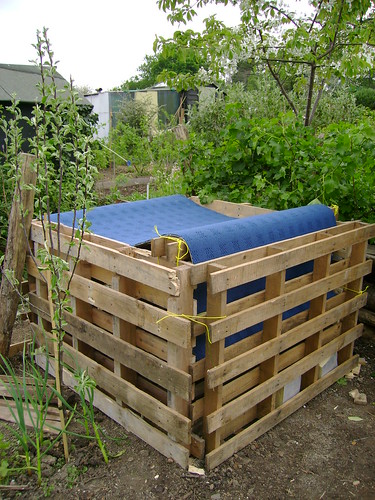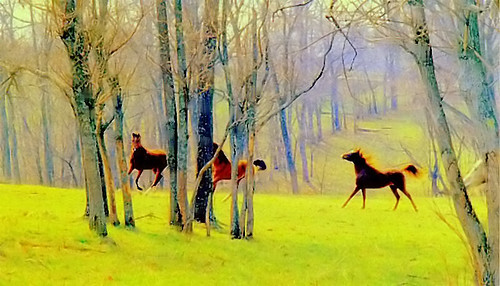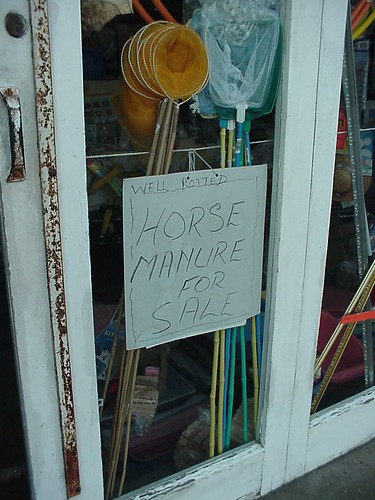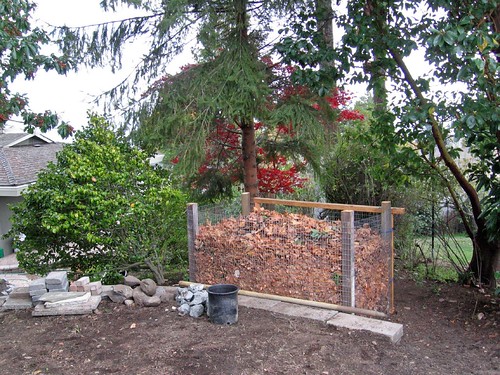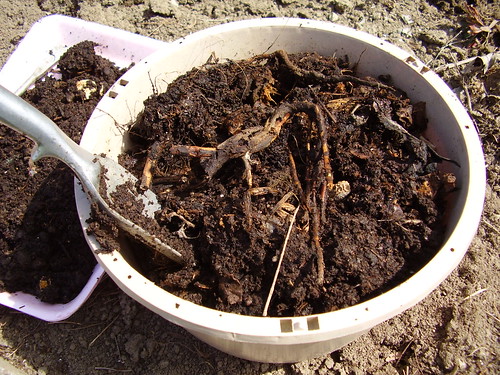
Compost by Fleurette Jardin
TheGardenLady received this question from Peggy.
I want to use compost as potting soil. I live on a 3rd floor so am limited to plants on a balcony, such as jasmine, monarda, some lobelia and other annuals to color the desk area and maybe a tomato plant or two. Any thoughts on using only compost? Will it hurt these types of plants?
The simple answer to the question, “can one pot plants directly into compost?”, is YES one can plant directly into compost.
Most people add their homemade compost to other soil because usually one does not have enough homemade compost unless you have a large property to add leaves to the household garbage- the combination forming compost.
Thus TheGardenLady wonders if the writer of this letter is planning on buying compost or making her own from her kitchen scraps. It seems that if one were buying bags of something to pot plants, it would be wise to purchase prepared potting soil in bags. Scientists have formulated their products for optimum plant growth and many of these potting soils come with added fertilizer. Everything is in one bag except for the plant and the water so that if you have limited space, buy something that has been made easy for you.
However if you have made your own compost from your household garbage, you must understand what the final product will look like before you use it. The garbage has to be completely decomposed. The finished product of compost is a black loamy soil that has no residue of any of the garbage that it was made from. There is no odor. If you see any bits of garbage or if your compost has any smell, your compost is not ready. When compost is not fully decomposed, plants planted in it may turn yellow and appear stressed.
If you are planning to make your own compost or have made your own compost, do you have enough homemade compost to plant the numerous plants you ask about? If you do have enough homemade compost, you can use it in pots and plant directly in it. But you must understand that you do not use compost until it is completely decomposed. An easy test to see if the compost is ready, is to put your compost in a couple of pots and plant some radish in these pots. If 3/4s or more of the radish seeds sprout and grow into radishes, then your compost is ready to use. See here.
Tomatoes should have no trouble growing in your compost. In TheGardenLady’s compost bin, tomatoes and potatoes always seem to self seed and grow.
Jasmine should have no trouble growing in compost; but are you sure you want a plant that can grow into a 15 ft. shrub? See here.
If you are using compost that is ready to be used, it cannot hurt any plants. It is the way nature makes soil. But you must be sure that the material you are using is completely decomposed.

